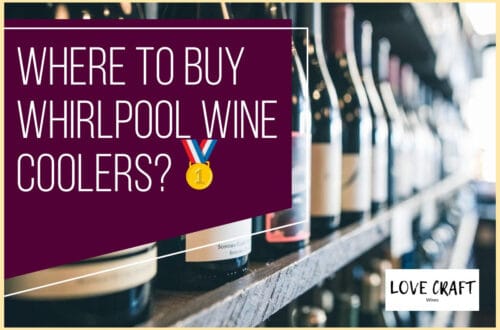Have you ever wondered how wines are evaluated and ultimately given a score or grade? Wine tasting and evaluation is a complex process that takes into account various factors, from the appearance and aroma to the taste and finish of a wine.
Understanding how wines are scored and graded can help you make better-informed decisions when choosing a bottle to purchase or serve. In this article, we’ll explore the factors that are considered in wine evaluation, the standardized scoring systems used by wine critics and experts, and how to interpret wine scores and grades.
From the 100-point scale to alternative scoring methods, we’ll provide you with a comprehensive guide to wine scoring and grading. Whether you’re a wine enthusiast or just starting to explore the world of wine, this article will give you the knowledge you need to select and enjoy the perfect bottle.
Table of Contents
Factors Considered in Wine Evaluation
As you taste each glass, you’ll be transported to a world of aromas and flavors that will captivate your senses.
When evaluating wines, there are several factors to take into account, including appearance, aroma, taste, and finish. Blind tastings are often used to eliminate any bias towards a particular brand or winery. This allows the evaluator to focus solely on the wine’s characteristics.
Subjective versus objective criteria are also considered. Subjective criteria include personal preferences and opinions. Objectivity, on the other hand, involves the use of measurable and quantifiable factors such as acidity, tannins, and alcohol content.
The use of both subjective and objective criteria ensures a more comprehensive evaluation of the wine’s quality. Standardized scoring systems are often used to provide a universally accepted rating of a wine’s quality.
These systems take into account factors such as aroma, taste, and finish, as well as the wine’s overall complexity and balance. Understanding how these scoring systems work can help you make informed decisions when purchasing wine and help you appreciate the nuances of each glass.
Standardized Scoring Systems
This section breaks down the usual systems used to give wine an official thumbs up or down. Standardized scoring systems are often used to rate wines based on their quality and characteristics. These systems use a set of criteria that are evaluated during blind tastings by expert panels to ensure impartiality.
One of the most popular standardized scoring systems is the 100-point scale. This system was developed by Robert Parker Jr. and is widely used in the wine industry. Wines are rated on a scale from 0 to 100, with 100 being the highest possible score.
The system takes into consideration factors such as appearance, aroma, taste, and overall balance to determine the score of a wine. Scores above 90 are considered exceptional, while wines rated below 80 are generally considered to be of poor quality.
The 100-Point Scale
You’re missing out on the full wine experience if you don’t know about the 100-point scale – it’s the ultimate guide to determining which bottles will truly blow your mind. This scoring method was first introduced by wine critic Robert Parker, and it’s now widely used by critics and enthusiasts all around the world.
The 100-point scale is based on the subjective evaluation of a wine’s appearance, aroma, flavor, and overall quality. Here are some key things you should know about this scoring system:
- Wines that score between 95 and 100 are considered exceptional and rare.
- A score between 90 and 94 means the wine is outstanding and highly recommended.
- Wines that score between 85 and 89 are good, but not exceptional.
- Scores below 80 mean the wine is flawed and not recommended.
The 100-point scale is not perfect, and it’s subject to the wine critic opinions and preferences. Despite its flaws, the 100-point scale is still the most popular wine scoring method out there. It’s easy to understand, and it provides a quick reference for consumers who want to know which wines are worth buying.
However, it’s important to remember that wine tasting is a personal experience, and what one person loves, another might not. In the next section, we’ll explore other scoring methods that can also help you find the perfect bottle of wine.
Other Scoring Methods
If you’re looking for more ways to find the perfect bottle of wine, there are other scoring methods to consider besides the 100-point scale.
Blind tastings are one such method, where a group of expert tasters will evaluate wines without knowing their brand or price. This eliminates any bias and allows for a more objective evaluation of the wine’s quality.
Comparative evaluations are also used, where wines are tasted side by side and ranked in order of preference. This method helps to identify the best wine in a particular category or style.
Another scoring system that’s gaining popularity is the five-star rating system. Similar to hotel ratings, wines are given a rating out of five stars based on their quality and value. This system is more user-friendly and accessible to the general public, as it’s easier to understand and compare different wines based on their star rating.
Another alternative is the letter grade system, where wines are given a grade from A+ to F based on their quality. However, this system isn’t widely used and can be confusing to understand for those not familiar with the grading system.
Understanding Wine Scores and Grades
To truly understand how to choose the best bottle of wine for your taste and budget, it’s important to have a clear understanding of the various scoring and grading systems used by experts in the industry. Wine tasting and sensory evaluation are the two most commonly used methods to assign scores and grades to wines.
Understanding how wine scores are determined will give you a better idea of how to interpret them and use them to make informed decisions. Here are some key points to keep in mind when understanding wine scores and grades:
- Wine scores are assigned based on the wine’s visual appearance, aroma, flavor, and overall balance.
- Scores typically range from 50-100 points, with anything above 90 considered outstanding.
- Wine grades are often assigned based on a letter grade system, with A+ being the highest grade and C- being the lowest.
- Scores and grades are subjective and can vary from one critic to another.
- It’s important to consider the context of the score or grade, such as the price point and the type of wine, when using it to make a purchasing decision.
Frequently Asked Questions
What is the most expensive wine ever sold and how was it scored?
Hey there, wine enthusiast! Are you curious about the most expensive wine ever sold and how it was valued? Well, brace yourself because the answer may leave you in awe.
The most expensive wine ever sold was a 1945 Romanée-Conti. It sold for a whopping $558,000 at a Christie’s auction in Geneva in 2018. This bottle of wine was considered to be a rare and exceptional vintage, with only 600 bottles produced in that year. Its high valuation can be attributed to its historical price trends and the growing demand for well-aged and rare wines.
Wine valuation is a complex process that takes into account factors such as age, vintage, rarity, and condition, among others. This particular wine was rated 100 points by wine critic Robert Parker, which undoubtedly contributed to its astronomical price tag.
Are wine scores consistent across different countries and cultures?
When it comes to wine scoring systems, there are both similarities and differences across different countries and cultures. While certain factors such as taste, aroma, and texture are universally considered when grading wine, cultural factors can also play a role in wine grading.
For example, in some cultures, a wine’s age and history may be more important than in others. Additionally, different countries may use different scales or scoring methodologies when grading wine. It’s important to consider these cultural nuances when comparing wine scores across different regions.
Overall, wine scoring is a subjective process, and it’s important to take into account the individual preferences and biases of the critic or taster.
How do wine critics train their palates to evaluate wines?
Wine tasting techniques aren’t innate skills, but rather honed abilities developed over time through sensory evaluation training.
Wine critics, for instance, undergo rigorous training to train their palates and accurately evaluate wines. To give you an idea, it’s said that a wine critic may taste up to 80 wines in one sitting. This is a daunting task as it requires an immense amount of concentration and a highly trained palate.
They use a variety of techniques such as blind tastings, where the label is hidden, and the critic must focus solely on what they taste. They also use a systematic approach to tasting, which involves evaluating the wine based on its appearance, aroma, flavor, body, and finish.
Through this sensory evaluation training, wine critics can develop a deep understanding of the complexities of wine and provide an informed assessment to the public.
Can a wine’s age affect its score or grade?
When it comes to wine aging, it can affect both the taste and score of a wine. Different varietals age differently, and some may even improve with age while others may not.
It’s important to note that the storage conditions of a wine can also impact its aging process and ultimately its score. For example, if a wine is stored in a warm environment, it can accelerate the aging process and potentially lead to a negative impact on the wine’s taste and score.
On the other hand, if a wine is stored in a cool and dark environment, it can help preserve the wine’s flavors and aromas, ultimately leading to a higher score.
Ultimately, it’s important to consider all factors, including varietal and storage conditions, when evaluating a wine’s score.
Is there a correlation between a wine’s price and its score or grade?
Wondering if there’s a correlation between a wine’s price and its score or grade?
Well, wine quality vs. price is a topic of much debate in the world of oenology. It’s no secret that high-end wines come with a hefty price tag, but does that necessarily mean they’re of superior quality?
The truth is, the impact of marketing on wine scores can’t be ignored. Wine critics are human, after all, and can be swayed by factors such as brand reputation and marketing buzz.
That being said, it’s important to keep in mind that price isn’t the only indicator of wine quality. While there may be some correlation between the two, it’s not always a direct one.
Ultimately, it’s up to you to decide what you value most in a bottle of wine – whether it’s pedigree, flavor profile, or something else entirely.
Conclusion
So now you know how wines are scored or graded. It’s not just about taste; factors such as aroma, body, balance, and finish are all taken into consideration.
Standardized scoring systems such as the 100-point scale are commonly used, but there are other methods as well.
Understanding wine scores and grades can be helpful in choosing a wine that suits your taste and budget. It’s like having a map when you’re trying to navigate a new city – it gives you a sense of direction and helps you make informed decisions.
So go ahead, explore the world of wine, armed with the knowledge of how it’s scored and graded. It’s like having a secret key to unlock a treasure trove of flavors and aromas!





